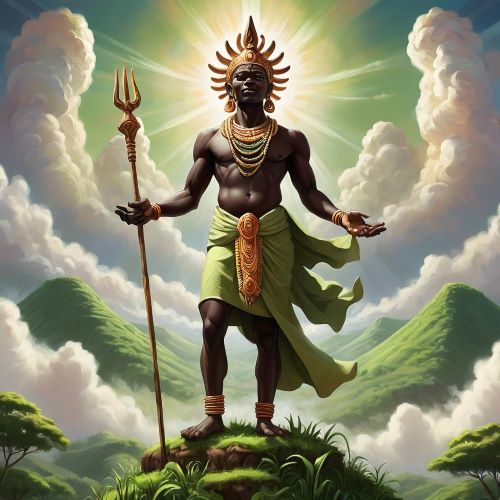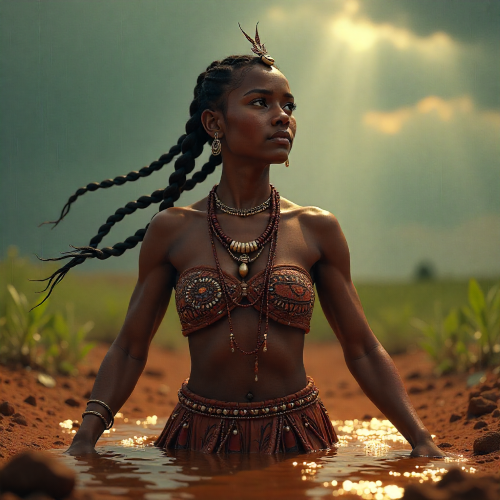Meru & Kikuyu Mythology
Meru and Kikuyu mythology, from the highlands of central Kenya, expresses a sacred vision of creation rooted in the slopes of Mount Kenya, known to the Kikuyu as Kirinyaga, the mountain of brightness. For the Meru and Kikuyu peoples — two closely related Bantu-speaking groups — the mountain is more than a geographical landmark; it is the dwelling place of the divine, the source of life, and the axis of moral order. Their mythology intertwines reverence for the land, ancestry, and divine authority, revealing a cosmology where the spiritual and natural worlds coexist in harmony.
At the heart of Kikuyu mythology stands Ngai, also called Mwene Nyaga, the creator and supreme god. Ngai is a god of the sky, rain, and fertility, the giver of life and moral law. He is believed to dwell atop Mount Kenya, from where he watches over humanity and the rhythm of creation. According to tradition, Ngai created the first man, Gikuyu, and his wife Mumbi, at a sacred spot called Mukurwe wa Gathanga. From their union came nine daughters, the ancestors of the nine Kikuyu clans. Ngai’s gift of fertile land and flowing rivers established the Kikuyu covenant with the earth — to cultivate it with respect, gratitude, and justice. The mountain, forests, and fig trees (mugumo) remain sacred spaces where offerings and prayers are made to maintain harmony between heaven and earth.
Meru mythology shares many of these beliefs but carries unique stories that highlight their origins and divine trials. The Meru tell of their ancestors’ escape from enslavement under a powerful being known as Nkubiu or Mbwaa, guided by ancestral spirits and protected by the god Murungu (a name also used for the creator in other East African traditions). Murungu led the Meru through rivers and forests until they reached the fertile slopes of Mount Kenya, which they recognized as the home of the divine. This migration myth represents both physical liberation and spiritual renewal — the triumph of faith and endurance guided by divine will.
For both the Meru and Kikuyu, Ngai or Murungu is not distant but deeply present in daily life through nature’s elements — the rain, wind, and sun all carry his blessing. Ancestral spirits, or ngoma, act as intermediaries, protecting the living and ensuring balance within the community. Rituals of sacrifice, prayer, and song are performed beneath sacred fig trees, where elders face Mount Kenya to speak with the divine. Cows, goats, and honey are offered to express gratitude or seek favor, reflecting a spiritual economy of reciprocity between humanity and the gods.
Meru and Kikuyu mythology teaches that righteousness (kihooto), respect for elders, and stewardship of the land are divine laws, not mere customs. The myths remind their descendants that Mount Kenya is more than a mountain — it is a living altar, a place where heaven once touched earth, and where it still whispers through mist, rain, and sunlight.




